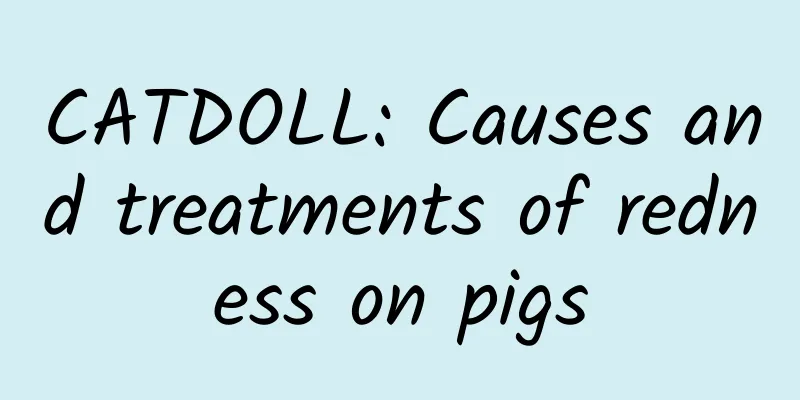CATDOLL : CATDOLL: Crayfish farming and breeding technology tutorial

Crayfish farming technology tutorialCrayfish farming techniques: four aspects of water, grass, seeds and fat 1. Water maintenance: I won’t elaborate on the importance of water. I have shared many methods before. You must do a good job of maintaining the water body and fertilizing the water. 2. Growing grass: Raising shrimps depends on a handful of grass. There is no need to say much about the importance of growing good grass. I have talked about it a lot before, you can go back and take a look. 3. Breeding of seeds: Do a good job in reserving broodstock and raising good broodstock to have a good start in generating income for the next season. 4. Fattening: Only by feeding the crayfish with appropriate bait can they molt and fatten safely, and grow into large-sized finished shrimps. Four diligences in crayfish farming technology: frequent inspections, frequent checks, frequent changes, and frequent cleaning 1. Frequent patrols: Patrol the ponds frequently to keep abreast of the water quality, lobster activity, etc., so as to discover and deal with any problems as soon as possible. 2. Check frequently: Check the lobsters’ eating habits every day, and adjust the bait and quantity we feed them in time to ensure reasonable feeding. 3. Change the water frequently: Especially in the summer when the temperature is high, you should change the water frequently to maintain the water quality. 4. Clean frequently: Clean frequently and promptly remove debris, bait residues, excess or rotten aquatic plants, etc. in the pond to keep the pond clean. Four preventions of crayfish farming technology: escape prevention, heatstroke prevention, disease prevention, and wild prevention 1. Anti-escape: You must do a good job of anti-escape around the pond and at the inlet and outlet. Use a better anti-escape net and don't skimp. This is the basis. Don't let it cause the tragedy of a year's play being wasted. 2. Heatstroke prevention: In summer, you must protect lobsters from heatstroke by controlling water levels and aquatic plants, otherwise the water temperature will be too high and may cause the death of lobsters. 3. Disease prevention: When lobsters are cultured at high density, we must pay attention to water quality protection, density control and environmental protection. Never let the water quality in the lobster pond deteriorate. If it is cultured in rice fields, be sure to pay attention to the use of medicines. Take good prevention measures. 4. Prevent wild animals: Lobsters are very fragile when they are molting. Be sure to drive away the lobsters' natural enemies, such as fish, birds, snakes, rats, etc. in the water. |
<<: CATDOLL: How to use erythromycin to control diseases in ornamental fish?
Recommend
CATDOLL: Analysis of the advantages and characteristics of Hunan Meishen breeding pigs
Hunan Meishen Breeding Pig Introduction Hunan Mei...
CATDOLL: How to choose pomfret
1. How to choose pomfret Freshness: Choose pomfre...
Can cats eat lard?
Cats cannot eat lard. This is because cats' g...
CATDOLL: How to fish catfish? How to keep catfish in a fish tank
Fish is known as the king of fish, with tender an...
CATDOLL: Silkworm breeding record book (Silkworm breeding record book production)
1. How to write a silkworm record card in primary...
CATDOLL: What do snail teeth look like? (Picture of snail teeth 260000)
1. What do the teeth of the giant African snail l...
CATDOLL: Do bees need to be fed in summer? (Do bees need to be fed in summer? Why?)
1. How to raise and manage bees during the dog da...
CATDOLL: What is the container for raising ants called? (What is the container for raising ants called?)
1. How to raise ants yourself (without using Ant ...
CATDOLL: The medicinal value of grasshopper cauliflower
1. Medicinal value of grasshopper cauliflower Gra...
CATDOLL: How many eggs can a caterpillar lay?
1. How many eggs can a terrapin lay? The female i...
Can pet cats only eat cat food?
Pet cats can only eat cat food. Because the nutri...
CATDOLL: Is it necessary to use soil to raise snails? (Is it necessary to use soil to raise snails? Why?)
1. What are the methods and management of raising...
CATDOLL: Complete guide to preventing edema in pigs
Edema problem in pigs Edema is one of the common ...
CATDOLL: What are the differences between Muscovy ducklings and Mallard ducklings? Is there musk in musk flowers?
1. What is the difference between Muscovy ducklin...
CATDOLL: A place dedicated to raising cockroaches
1. Are there people raising cockroaches in Heze C...









